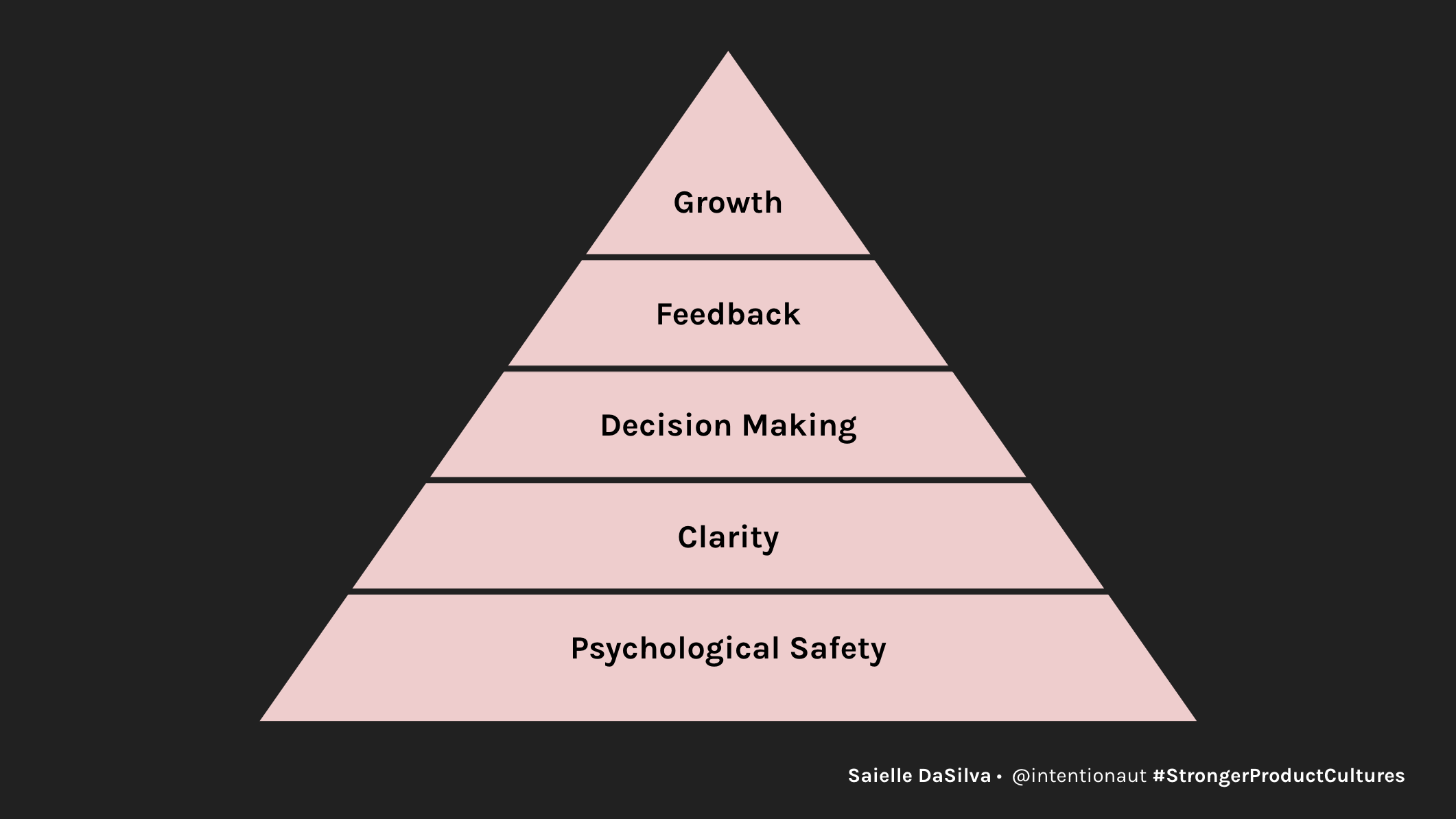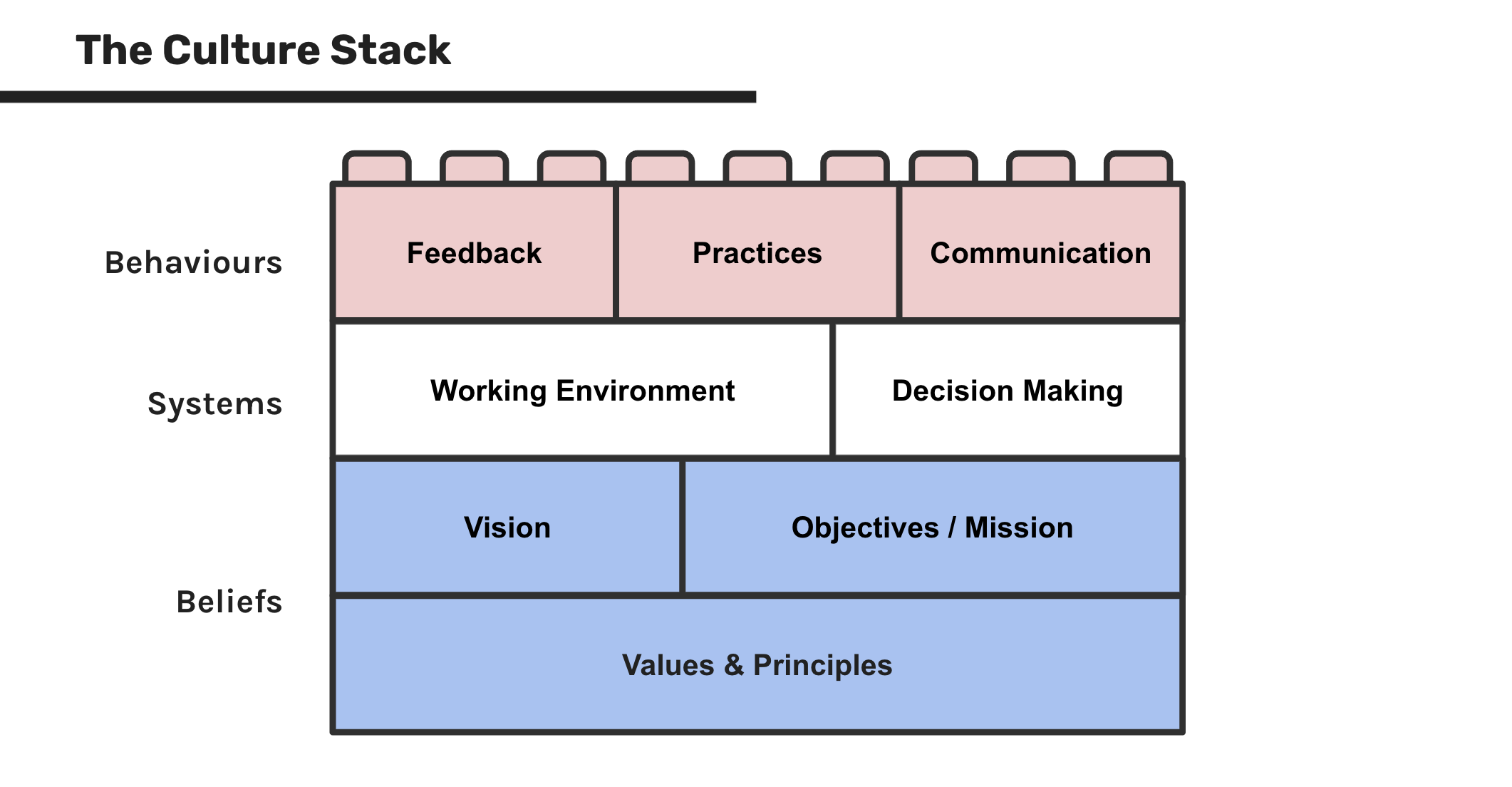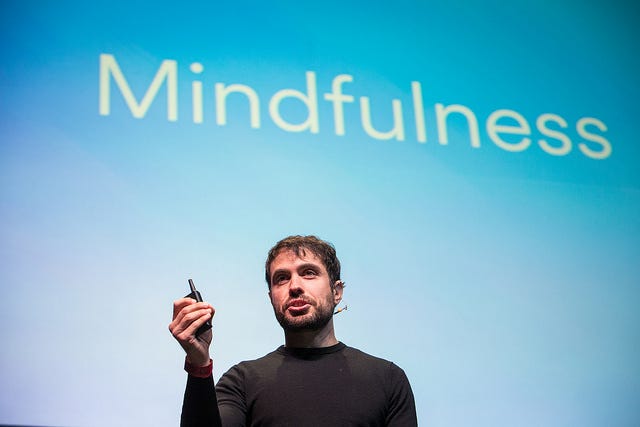Building Stronger Product Cultures

I'm proud to share thoughts with the good folks in Edinburgh at 2021's Turing Fest. I know Brian and the crew have worked very hard to put on a lovely event and I'm honoured to join you all as a speaker.
If you enjoyed this talk, you can subscribe to this blog for more updates, or feel free to pitch in a few bucks towards my gender transition fund.
Stronger Product Cultures
The title of my talk this year is Designing Stronger Product Cultures. You can follow #StrongerProductCultures on Twitter for updates.
Slides for the talk can be found here.
The core of the talk is that Stronger Product Cultures are founded on psychological safety, which is a belief based in actions we take as leaders. Psychological safety is one of the most crucial ingredients in teams that outperform against their competition and yet, few leaders know how to cultivate this vital factor of team success.

The Culture Stack
One of the big ideas I shared with the audience at Turing Fest was the idea of the culture stack. The Culture Stack is a model of understanding the relationship between actions and beliefs in product cultures. Building on and inspired by Martin Eriksson's talk on The Decision Stack, I wanted to show a model of thinking through the design of team cultures.
In the model, I show that culture is built from our beliefs and carried through to our systems and ends in behaviours. Human beings

Hiring Practices
Further in the talk I break down some details on how we built the hiring practice at Cazoo. One of the initial things to do was clarify our values and what mattered. We don't look for traditional markers like education as indicators of success for our team. Instead, we prioritise using behavioural science and a neutral playing field to inform our decisions as a team.
The Advocate
The person in this role has a few crucial jobs to do in hiring. One of the most important things is to keep feedback balanced, open and tightly defined against our hiring scorecard and to watch for bias.
- Their focus is to push in favour of the person we interviewed
- Advocate for balance in the panel
- Help the team balance perspectives and discussion
- Ensure everyone speaks and shares input and feedback
- Judges feedback against written scorecard to check for bias
The Hiring Scorecard
Each company's scorecard is going to depend on roles, values and culture to shape the best things for your team. The most important thing to keep in mind when designing a hiring scorecard is to clearly define the technical and people skills you need and leave little room for bias. Focus on culture add not culture fit when you define your scorecard.
Skill | Description | Score | Notes |
Research | Presentation and communication shows this person makes research informed design decisions. Their prior work relies on a variety of techniques like interviews, diary studies, jobs to be done, journey maps, and quantitative data with confidence. | 1-5 | Each of these is about a 3/5 on the scale of maturity |
Information Architecture | Considers content needs in work before interactions. Can break down work into content, objects, and events as needed. Organises interactions around mental models and content needs. | ||
Interaction Design | Defines and articulates a problem and aligns with others on it before exploring solutions. Comfortable and confident in challenging decisions and asking questions. Work demonstrates an understanding of how to balance user needs and business needs. | ||
Collaboration | Demonstrates examples of involving team in decision making and collaboration throughout product lifecycle. Can illustrate examples of when input from others meant a change of direction. Works to keep pace with the needs of others in the business. | ||
Communication | Attentive, empathetic. Focuses on gathering contributions from others. Organizes information to align teams and stakeholders. Has a well developed toolkit of techniques to align diverging opinions. |
The Debrief
This is where the rubber meets the road. Each and every candidate we see gets a team debrief. The main responsibility of the team is to ensure they give feedback about a person's ability to do the work as we've agreed we need done as a team.
Culture Add at Cazoo is clearly defined and when we debrief, the most important thing is making sure we judge feedback against both the role's job description and our scorecard.
The Growth Model
Building on on your hiring scorecard, you can easily build this into a self-serve growth model for your team. The team, seeing the way values are applied can begin to manage their own growth as well as provide healthy feedback to others. I'll be building on this in future posts here on Blossom.
Bibliography and Further Reading
Every time I give a talk, I believe it's important to share the sources and inputs that shaped my thinking. Here's the Bibliography and further reading for this talk.










Thank You
If you enjoyed these resources, you can subscribe to this blog for more updates, or feel free to pitch in a few bucks towards my gender transition fund.
Thanks very much,
Saielle










